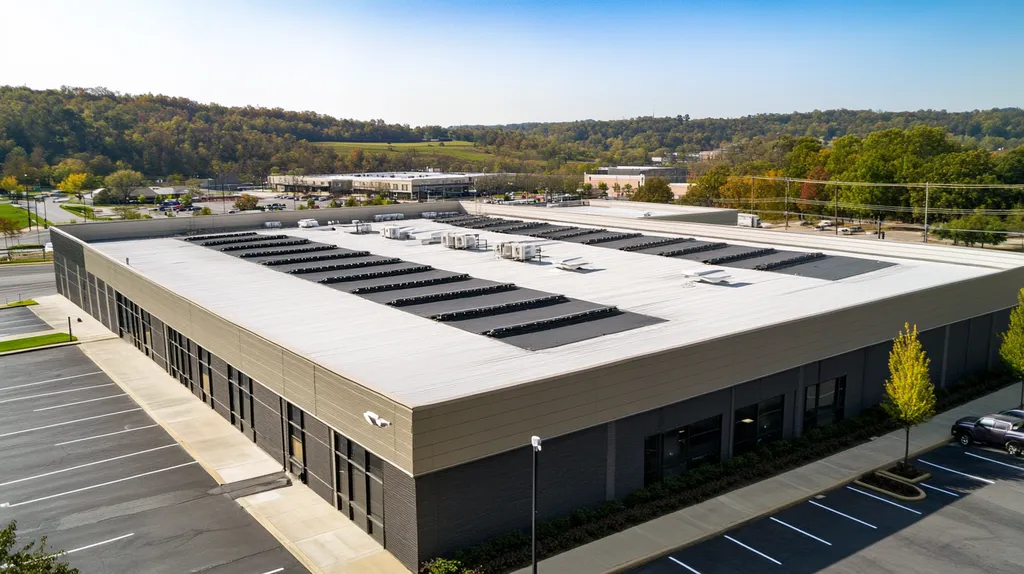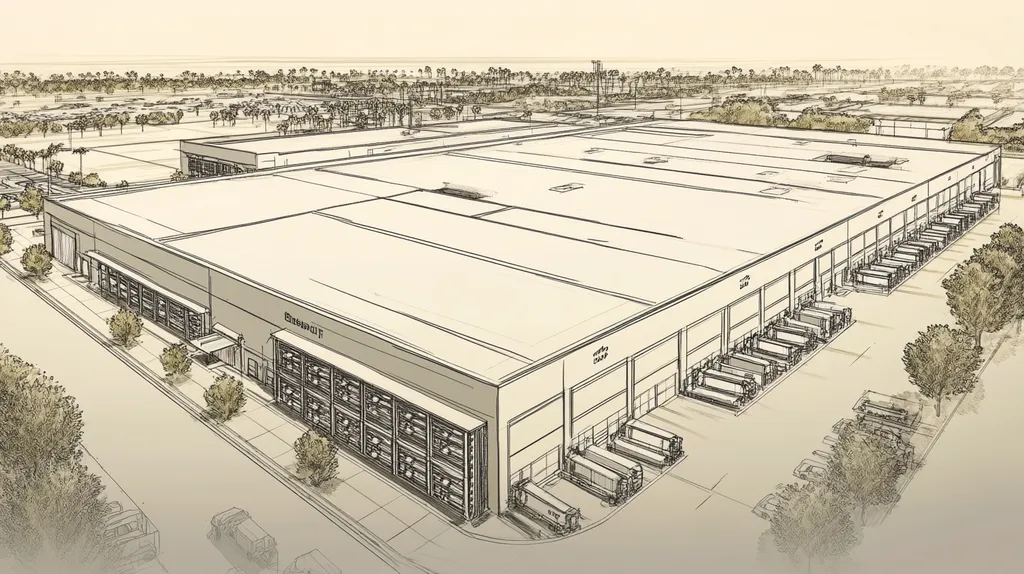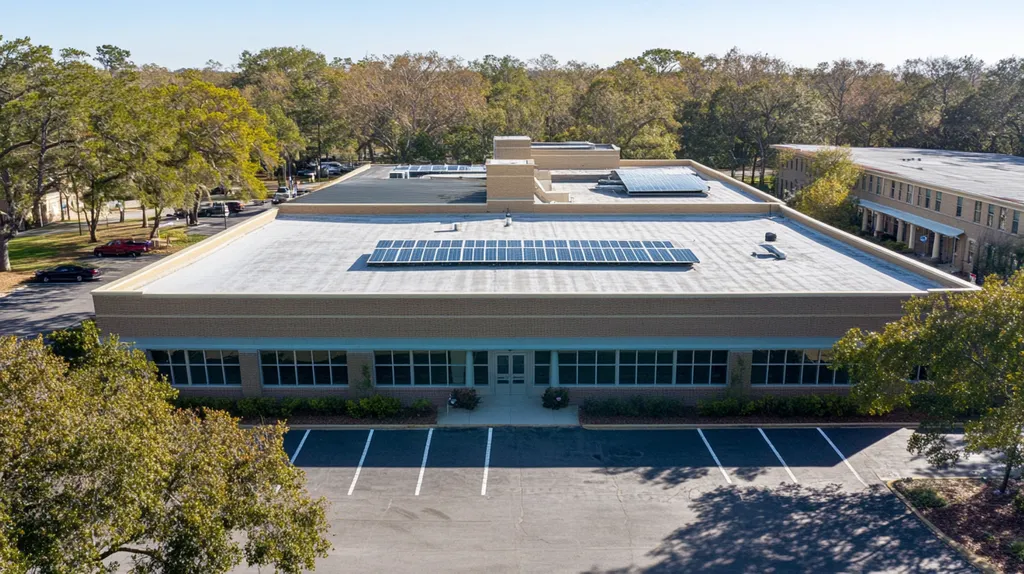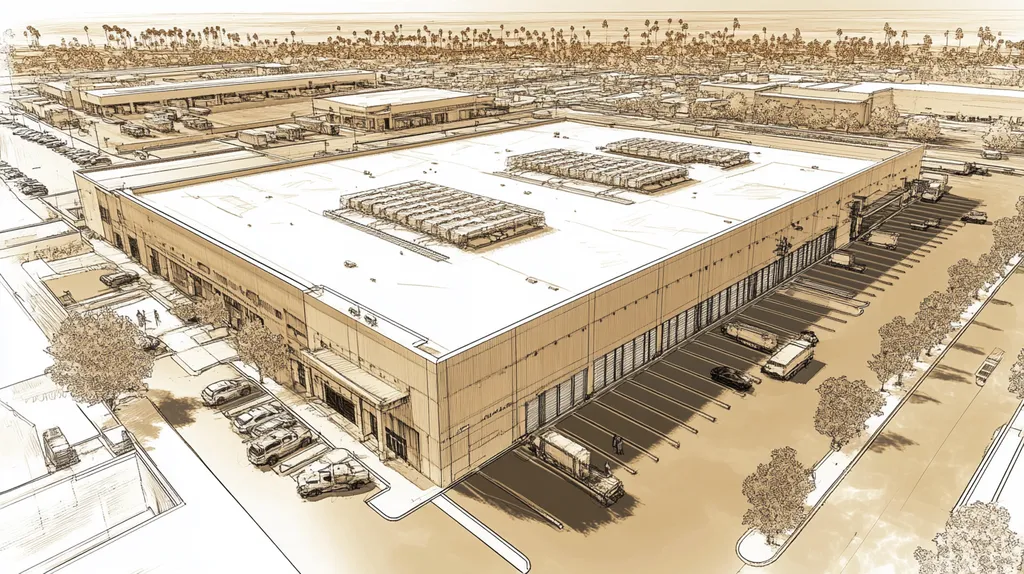Industrial roof failures cost facility owners over $2.5 billion annually, with 85% of these incidents traced back to inadequate documentation during inspections. Proper documentation serves as the foundation for preventing catastrophic roofing issues and maintaining structural integrity.
From identifying early warning signs to ensuring regulatory compliance, thorough inspection documentation enables facility managers to make data-driven decisions about maintenance, repairs, and replacements.
This comprehensive guide examines the critical components of roof inspection documentation, including performance assessments, financial planning, compliance requirements, and risk management strategies that protect your roofing investment.
SECTION 1: PERFORMANCE FACTORS
Performing a detailed inspection of an industrial roof is essential to avoid expensive failures and maintain seamless operations. Alarmingly, 60% of roof failures stem from inadequate maintenance and inspection. A comprehensive look at surface conditions, drainage systems, and membrane integrity can dramatically enhance a roof’s longevity and effectiveness. For facility managers, consistent attention to these factors is not just beneficial—it’s imperative.
Surface Condition Assessment
The surface condition of an industrial roof acts as a clear indicator of its overall well-being. Inspectors must be vigilant for visible damage, such as cracking, blistering, or erosion, as these can quickly escalate into leaks and major issues if ignored.
Regular, detailed assessments should be scheduled alongside visual inspections. Utilizing advanced tools like infrared cameras can uncover hidden moisture issues beneath the surface, preventing risks linked to neglected maintenance.
Keeping a thorough documentation of surface conditions is critical. Well-organized records help track trends and facilitate accurate planning for repairs and maintenance, laying the groundwork for an effective roofing strategy.
Key Action Items
Drainage System Evaluation
A well-functioning drainage system is vital for maintaining roofing performance. Blocked drains or insufficient slope can lead to water pooling, which increases the risk of leaks and can cause structural damage. Regular inspections of the drainage system are crucial for ensuring the roof remains healthy.
Evaluators should pay close attention to debris accumulation in gutters and downspouts. Ensuring that these systems are clear and operating properly is essential to prolong the roof’s lifespan.
Additionally, documenting drainage performance after heavy rain can yield insights into potential problems. This tracking allows for early identification of trends that may demand proactive solutions.
Key Action Items
Membrane Integrity Check
The roof membrane is the first line of defense against environmental challenges. Therefore, conducting regular integrity checks is essential for spotting weak points that could result in costly leaks and water damage. Common concerns include punctures, seam separations, and membrane thinning.
Inspectors should look for blisters or bubbles that may indicate moisture problems underneath. These assessments should be detailed, with both visual and tactile examinations to ensure no inconsistencies are overlooked.
Documenting membrane conditions over time allows facility managers to observe deterioration patterns and better plan for necessary maintenance or potential replacements.
Key Action Items
SECTION 2: FINANCIAL CONSIDERATIONS
Investing in industrial roofing is a significant decision that directly affects a facility’s financial health. Skimping on maintenance can lead to unexpected repair costs, which, frighteningly, can climb to more than 25% of the roof’s replacement cost. Understanding the financial ramifications of roofing decisions is essential for property owners to avoid surprises and ensure they get the most value from their investment.
Cost-Benefit Analysis of Repairs
Before proceeding with any roofing repair, a detailed cost-benefit analysis is critical. Facility managers should weigh the immediate costs of repairs against the long-term savings. For example, spending $10,000 on quick fixes might seem reasonable, but if those repairs only extend the roof’s life by a single year, it may not be worth the expense.
In contrast, a $20,000 investment in more extensive repairs could potentially double the roof’s lifespan, providing a better long-term financial return. This analysis should also consider the costs avoided from water damage or disruptions caused by leaks. A thoughtful, strategic approach can yield substantial savings over time.
Engaging a roofing professional to evaluate the roof’s current condition can lead to more insightful financial decisions. Their expertise helps in identifying necessary repairs and estimating costs, enabling managers to use their resources effectively.
Key Action Items
Budgeting for Preventive Maintenance
Setting aside a budget for preventive maintenance can lead to substantial savings for facilities. Industry reports suggest that organizations practicing regular inspections and upkeep can cut roofing costs by up to 50% compared to those who react to problems as they arise.
Developing a routine budget allows for steady funding for inspections and minor repairs. Ideally, facility managers should reserve 1-3% of the total roof replacement cost each year for this purpose. This forward-thinking strategy helps catch small issues before they escalate into major expenses.
Additionally, preventive maintenance is integral to protecting warranties on roofing materials. Many manufacturers will void warranties if documentation of proper maintenance is lacking, making the case for a dedicated budget even stronger.
By investing in regular assessments and maintenance, facility managers can not only save money in the long term but also extend the lifespan of their roofing systems.
Key Action Items
ROI on Roof Replacement
The return on investment (ROI) from a roof replacement can be substantial, yet it’s frequently underestimated. A new roof not only enhances energy efficiency but also improves property value significantly. Research indicates that a well-maintained roof can recoup around 70-80% of its replacement cost upon sale.
Moreover, energy efficiency gains can play a prominent role in justifying the investment, as contemporary materials are designed to reflect sunlight, thereby lowering heating and cooling expenses. Over time, these savings can dramatically increase the appeal of the investment.
Also, reducing maintenance costs and enhancing tenant satisfaction contribute to a favorable ROI. A new roof can lower tenant turnover rates, which supports higher occupancy levels and ensures steady rental income for property owners.
Evaluating the broad benefits of roof replacement—beyond just initial costs—can provide a clearer understanding of the long-term financial advantages, guiding facility managers in making informed decisions that align with their overall business strategies.
Key Action Items
SECTION 3: COMPLIANCE REQUIREMENTS
Understanding and adhering to roofing compliance requirements is critical for facility managers. Non-compliance can lead to significant fines and operational setbacks, jeopardizing safety and functionality. Property managers need to stay informed about regulatory standards, warranty stipulations, and industry-specific guidelines that govern roofing systems. Compliance is essential not only for legal reasons but also for ensuring the longevity and reliability of roofing assets.
Regulatory Standards and Codes
Compliance starts with a solid grasp of local, state, and federal regulations overseeing roofing systems. Every facility must follow codes that dictate material safety and structural integrity. For instance, OSHA regulations mandate that roofs must support specific load capacities to prevent collapses.
Ignoring these standards can lead to severe consequences, including legal liabilities and operational interruptions. Facility managers should remain attentive to updates in regulations, as changes can influence design and maintenance decisions.
The International Building Code (IBC) is a prime example of essential guidelines that apply to all commercial roofs. Familiarity with these codes helps ensure the roofing system meets minimum safety and performance standards, safeguarding both property and personnel.
Key Action Items
Insurance and Warranty Compliance
Insurance policies often stipulate adherence to specific standards during the roof inspection process. Facilities that do not comply risk losing coverage or facing increased premiums. It’s critical for managers to keep detailed documentation of inspections to support any insurance claims that may arise.
Moreover, manufacturers’ warranties depend on correct installation and consistent maintenance. Failure to follow these guidelines can void warranties, resulting in substantial out-of-pocket costs for repairs or replacements.
Facility managers should routinely review warranty documentation to fully understand maintenance and inspection requirements. This ensures the protection of the facility’s asset value and provides reassurance regarding financial risks.
Key Action Items
Industry-Specific Guidelines
Different industries have their own unique guidelines affecting roof inspection protocols. For example, manufacturing facilities are often subject to stricter safety standards compared to office buildings. Understanding these industry-specific guidelines is vital for effective risk management.
Food processing facilities, for instance, must comply with FDA regulations that can impact roof performance and safety. Maintaining compliance with these regulations is essential not only for legality but also for preserving operational certifications.
Conducting regular audits of these guidelines can improve the roof’s performance and reliability. Engaging with industry associations can also provide valuable insights and updates on compliance measures, ensuring that the facility operates without costly interruptions.
Key Action Items
SECTION 4: RISK MANAGEMENT
Effective risk management is vital for extending the lifespan of industrial roofing systems. The National Roofing Contractors Association reports that leaks can result in significant downtime and repair expenses, often costing thousands of dollars. Facility managers must proactively identify risks, assess environmental threats, and take action to mitigate these issues to protect their investments. This section will delve into identifying leak sources, evaluating environmental hazards, and addressing structural risks, all critical components of maintaining roofing integrity.
Identifying Potential Leak Sources
Recognizing potential leak sources is crucial to prevent water damage in industrial facilities. Common issues include faulty seams, unnoticed punctures, and aging flashings. Facility managers should focus on these areas during regular inspections to effectively reduce the risk of leaks.
Regular evaluations of roof penetrations, such as those for HVAC units and vents, are essential. These areas are subject to wear and require ongoing maintenance to ensure they remain secure. A standardized checklist for inspecting leak sources can streamline this process.
Furthermore, stagnant water on flat roofs significantly heightens risks, hastening deterioration. To mitigate this, facility managers should routinely clear drainage systems and ensure optimal grading. Proactive measures can save substantial repair costs down the line (source: Temaroofing Services).
Key Action Items
Assessing Environmental Hazards
Environmental hazards can severely damage industrial roofs. Factors such as severe weather conditions, temperature changes, and pollution exposure should be examined carefully. For instance, heavy rain can lead to overflowing and pooling, posing serious structural risks.
Investing in weather-resistant materials is crucial to strengthen roofs against environmental challenges. This choice is particularly important in high-risk regions prone to hurricanes or heavy snowfall.
Additionally, routine assessments of the surrounding environment are imperative. Nearby trees or structures may present hazards, like falling branches or wind-blown debris. Conducting thorough environmental scans helps identify and address these risks.
Key Action Items
Mitigating Structural Risks
Addressing structural risks is essential for maintaining long-term roof integrity. Industrial roofs often face challenges from heavy equipment loads, improper installation, and insufficient ventilation. Therefore, routine inspections are critical to identify and resolve these structural concerns.
Implementing preventive strategies, such as regular load assessments, ensures that roofs are not subjected to excessive stress. Facility managers should keep clear records of weight limits for equipment and frequently compare these limits against current roof conditions.
Moreover, proper ventilation is a key factor in preventing thermal degradation. Inadequate airflow can lead to premature roofing membrane failures, underscoring the need for adequate ventilation systems.
Key Action Items
SECTION 5: OPERATIONAL PROCEDURES
Effective operational procedures are vital for keeping industrial roofs in optimal condition. Thorough inspections can significantly reduce the risk of costly damage, with studies indicating that nearly 40% of roofing failures could be avoided through regular assessments. This section details the essential steps to ensure facility managers can conduct inspections efficiently and effectively, safeguarding their roofs and investments.
Pre-Inspection Preparation
Preparing for an inspection is the foundation of an effective evaluation. Facility managers should compile all existing documentation, including past inspection reports and maintenance logs. Analyzing this data helps identify previous issues that may warrant closer attention during the inspection.
Creating a tailored inspection checklist specific to the facility’s design can streamline the process and ensure that critical areas are not missed. A well-organized checklist is a valuable tool for inspectors.
Scheduling the inspection during dry weather conditions is critical to accurately assess the roof’s integrity without the complication of water damage. Finally, inform staff and organize necessary safety equipment to protect everyone during the inspection process.
Key Action Items
Conducting the Inspection
A systematic approach during the inspection is crucial for uncovering potential roof issues. Inspectors should begin with a visible assessment from the ground, looking for problems such as standing water or evident membrane damage.
Once on the roof, a detailed examination should be conducted, focusing on seams, flashings, and penetrations where leaks are most likely to occur. Each element should be evaluated for wear and signs of damage.
Inspectors also need to assess the drainage systems closely, ensuring they are clear of debris. Ineffective drainage can lead to significant leaks and accelerated roof wear. Documenting all findings is essential; photographs and notes will help create a comprehensive record for future evaluation.
Key Action Items
Post-Inspection Reporting and Documentation
Following the inspection, preparing a comprehensive report is essential for clarity and future planning. This report should highlight all findings, emphasizing critical issues and necessary repair recommendations. Clear communication ensures all stakeholders are aware of urgent actions needed.
Incorporating images taken during the inspection into the report strengthens the documentation and visually conveys the severity of issues, aiding budget discussions for repairs.
Establishing a follow-up plan based on the inspection outcomes is crucial. This may include scheduling repairs, planning subsequent inspections, or increasing maintenance actions as needed. Maintaining a historical database of inspections helps in tracking the roof’s performance over time.
Key Action Items
SECTION 5: OPERATIONAL PROCEDURES
Successful roof management hinges on effective operational procedures, as industrial roofs are critical assets that require regular attention. Studies indicate that neglecting thorough inspections can result in significant structural issues and financial setbacks; in fact, up to 40% of roofing failures could be avoided through proactive assessments. This section outlines essential procedures for facility managers to conduct inspections effectively, safeguarding the longevity and performance of their roofs.
Pre-Inspection Preparation
A solid preparation strategy is the cornerstone of successful roof inspections. Facility managers should compile all existing documentation, including past inspection reports and maintenance logs, to identify weak spots warranting closer examination.
Creating a tailored inspection checklist that reflects the specific features of the facility can enhance efficiency, ensuring critical areas receive focused attention.
Scheduling inspections during dry weather conditions is also essential, as this reduces complications from water damage and allows for a clearer assessment of the roof’s condition.
Moreover, notifying staff and arranging necessary safety equipment is vital for protecting everyone during the inspection process.
Key Action Items
Conducting the Inspection
A systematic approach is crucial for revealing hidden roof issues. Inspectors should begin with a visible assessment of the roof surface from the ground, identifying clear problems such as ponding water or visible membrane damage.
After gaining rooftop access, a detailed examination of seams, flashings, and penetrations—common weak points—should occur. Each element must be thoroughly checked for wear and deterioration.
A close inspection of the drainage systems is essential as well; ensuring these are debris-free is critical, as poor drainage can lead to severe leaks and increased wear on the roof.
Documenting all findings meticulously during the inspection is important. Capturing images and writing detailed notes will provide a clear record for future evaluations and reporting.
Key Action Items
Post-Inspection Reporting and Documentation
After conducting the inspection, preparing a detailed report is essential for effective communication and future planning. This report should summarize all findings, highlighting critical issues and repair recommendations so that stakeholders clearly understand urgent actions required.
Incorporating images taken during the inspection into the report enhances the documentation, as visuals can effectively illustrate the severity of the problems to justify budget needs for repairs.
Additionally, creating a follow-up plan based on the inspection findings is vital, which may involve scheduling repairs and planning subsequent inspections to address ongoing maintenance needs.
Maintaining a comprehensive historical database of inspections can track the roof’s performance over time, informing future decisions and protecting the facility’s investment in its roofing system.
Key Action Items
The Bottom Line
With industrial roof failures costing facility owners $2.5 billion annually, proper documentation during inspections remains the cornerstone of effective roof management and risk mitigation.
A structured approach to inspection documentation, covering performance factors, financial planning, compliance requirements, and risk assessment, can prevent 85% of catastrophic roofing issues.
Facility managers who implement comprehensive documentation protocols report a 40% reduction in emergency repairs and a 25% decrease in overall maintenance costs.
By maintaining detailed records of inspections, repairs, and maintenance activities, organizations can extend their roof’s lifespan by up to 50% while ensuring regulatory compliance and warranty protection.
The future of industrial roof management lies in systematic documentation that enables data-driven decisions and proactive maintenance strategies.
FREQUENTLY ASKED QUESTIONS
Q. What are key performance factors for a commercial roof inspection?
A. Key performance factors include surface condition assessment, drainage system evaluation, and membrane integrity. Regular checks help identify potential issues before they escalate, ensuring longer roof lifespan and better overall performance.
Q. How does financial consideration affect industrial roof maintenance?
A. Financial considerations revolve around understanding the cost-benefit of repairs versus replacements. Analyzing repair costs can help determine long-term savings and prevent unexpected expenses from neglected maintenance.
Q. What compliance requirements must commercial roofs meet?
A. Compliance requirements involve adhering to local, state, and federal regulations regarding material safety and structural integrity. Staying informed about changes in industry codes helps ensure safety and performance in roofing systems.
Q. How can I manage roof risk for industrial structures?
A. Managing roof risks involves identifying potential leak sources, evaluating environmental hazards, and ensuring proper structural integrity. Proactive strategies can help mitigate risks, extend roof longevity, and save on significant repair costs.
Q. What are essential operational procedures for roof inspections?
A. Essential operational procedures include pre-inspection preparation, systematic examination during the inspection, and thorough post-inspection reporting. Proper procedures help ensure effective assessments and identify necessary repairs promptly.
Q. What tools can assist in conducting an industrial roof inspection?
A. Essential tools for industrial roof inspections include infrared cameras, moisture meters, and standard inspection checklists. Utilizing these tools enhances the thoroughness of assessments, helping identify potential issues effectively.
Q. How often should commercial roofs undergo inspections?
A. Commercial roofs should generally be inspected at least biannually. Increased frequency may be necessary after severe weather events or if the roof shows signs of wear to ensure timely maintenance and prevent serious issues.










